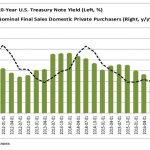“Sell everything except high-quality bonds. Stay short commodities. Yes, especially Oil. Emerging market majors all remain sells.” – RBS (January 11, 2016)
“RBS has advised clients to brace for a ‘cataclysmic year’ and a global deflationary crisis, warning that major stock markets could fall by a fifth and oil may plummet to $16 a barrel.” – UK Telegraph (February 11, 2016)
In the field of market punditry, you hear a lot of extreme calls, for it is the extreme that gets the most attention in this business. But the call made by RBS on January 11 of this year was one for the ages. It was the call heard round the world: “Sell Everything.”
Every major media outlet ran with the story…

And the returns since?
Crude Oil: +39%
Emerging Markets: +22%
S&P 500: +14%
High Yield Bonds: +11%
RBS’s Stock: -40%

Fascinating and ironic, I agree. But this story is much more than just a call gone horribly bad. In fact, it’s not about the outcome of the call at all. Let’s pretend the “cataclysmic year” unfolded just as RBS predicted. Would “selling everything” and “shorting commodities” really be good for your long-term portfolio returns?
Only if you got both the timing of selling everything correct and the timing of buying back in. You’d have to be right in your timing not once, but twice. This is no small feat given that study after study has shown that “market timing” tends to do more harm than good on average (this is before accounting for taxes, commissions, slippage, etc.).
Why is timing so difficult, most especially the alluring dream of picking a top?
Because markets, on average, go up over time. Since 1928, the S&P 500 has been positive 73% of years while the 10-year Treasury bond has been positive 82% of the time. A 60/40 portfolio with annual rebalancing would have been positive 79% of the time. If we extend that out to 10 years this balanced portfolio has been positive 100% of the time. These are not great odds to bet against.












Leave A Comment